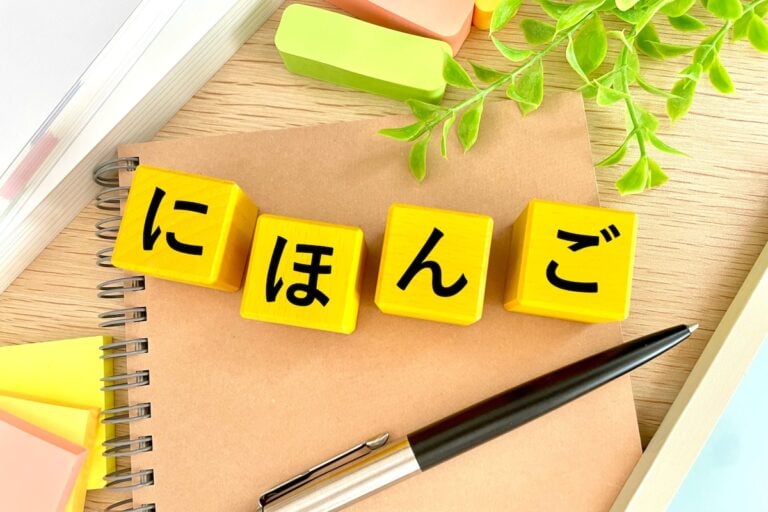
One day a couple of years into my time in Japan, one of my coworkers asked me if I was thinking about taking the 日本語検定試験. At first, I assumed they must have meant the 日本語能力試験 (JLPT), as Japanese people don’t take the JLPT and so often don’t know its exact name. However, that was not the case at all. While both are tests of Japanese knowledge, their applications and contents differ considerably, making them entirely different tests that could benefit you for very different reasons. Before getting into comparisons and applications, it’s important to have a general idea of what each test entails.
Japanese Language Proficiency Test (JLPT)
First up, and certainly more better known, is the Japanese Language Proficiency Test (or JLPT). As the name implies, this is a multiple-choice proficiency test that measures your aptitude in a variety of categories, such as grammar, reading, vocabulary, and kanji. Notably, and perhaps most contentiously, there is neither a speaking nor a writing portion of the test, so some people question how well it can actually gauge one’s proficiency in Japanese. Nevertheless, it remains one of the most popular choices for foreigners wanting (or needing) to prove their Japanese level.
This test is aimed at speakers of Japanese as a second language. Although in some cases, I’ve heard of people with foreign parents who were born and raised in Japan that were required to take the JLPT for job applications despite spending their entire lives in Japan attending public schools.
There are five levels from which you can choose to be tested, ranging from N5 all the way up to N1. The difference between the lowest and highest levels is quite stark, with N5 testing very basic kanji (~100 characters) and vocabulary (~800 words), whereas N1 tests 2141 kanji and about 10,000 vocabulary terms. Due to this disparity, however, you can try your hand at the JLPT early on in your language-learning journey.
Although the levels may offer some variety in difficulty, the test should not be taken lightly. Japanese abilities aside, the test is long and tiring. Different levels may have slightly different structures, but usually they will test for grammar, reading, and vocabulary in the first 90-minute section, and then listening during the second 60-minute session. There is also a short break between halves. Along with rule explanations and general proctoring duties, the whole process from start to finish can take a little over four hours. While this may not sound like much, having to stay alert and focused in a second language for that long can be tiring if you haven’t prepared adequately.
The good news is that, due to the JLPT’s popularity, there are thousands of resources available to help you practice. Some of the most popular book series are the sōmatome (総まとめ) and shinkanzen masutaa (新完全マスター) series, and for any level up to around N3, I think they’re a really good tool to help ace the tests. On a more personal note, however, I found reading Japanese novels and flashcard-based vocabulary study to be the most helpful strategy when taking N2.
Nihongo Kentei
Now, let’s take a look at the Nihongo Kentei (日本語検定)!
If you’ve never heard of this test, you’re not alone. Most foreigners are unaware that it exists because they often will never have any reason to take it. This is because the Kentei was designed as a Japanese proficiency test for native speakers of Japanese. The contents is, as you can imagine, much more advanced at its higher levels than the JLPT. Consider that the rate of passage for the JLPT among winter 2019 test-takers in Japan was 27.5%, whereas for the highest level of the Kentei—1 kyū (1級 level 1)—it was 7.2%. That’s quite the difference! Much of this is thanks to the Kentei’s eight levels, versus the JLPT’s five.
There is much more variety in what the Kentei covers. In fact, there are six categories of questions that you’ll find on the Kentei: Keigo (敬語 honorifics), bunpō (文法 grammar), goi (語彙 vocabulary), kotoba no imi (言葉の意味 definitions), hyōki (表記 expressions), and kanji (漢字). And, unlike the multiple-choice format on the JLPT, answers on the Nihongo Kentei are written down, ranging from a number to indicate one’s answer, to writing a specific kanji. Of course, since this test is aimed at native speakers, the test does not include listening or speaking sections.
Although the JLPT is a test that many foreigners will at least attempt at some point, most Japanese citizens will never take the Nihongo Kentei. Only about 300,000 people sit this exam every year, and compared to the country’s population of 124 million, that’s a drop in the bucket. Anyone from elementary school student to working professional can be seen sitting different levels of the exam, however it’s not often asked for by prospective employers, and instead helps gauge students on their Japanese ability if they are interested in improving, or employees who feel that a higher command of difficult elements of the language, such as keigo (敬語), would be beneficial.
Why take a Japanese language test?
There is nothing saying that you must take a Japanese language test. However, for personal or professional reasons, you may someday find yourself applying for one. There are many reasons this could be the case, from personal goals to a dream job that requires a certain proficiency level. These are certainly the two most common ones I have come across during my time in Japan.
On a personal level, studying for and maybe one day passing for one of these levels can contribute to feeling more integrated in Japanese society. With linguistic ability comes conversation with locals, and this eventually can lead to relationships with those around you, making you feel more at-home and fulfilled. If your personal desires to master the language are driving you to study for these exams, then look into both the JLPT and the Nihongo Kentei before deciding which one sounds like the better fit for you. You might consider the time required to pass the level you have your eye on, which sections of the language are most important to you, and so on.
Sometimes, however, the choice to sit these exams instead comes from a desire to further your career in Japan. Indeed, outside of ALT positions, it’s difficult to find work in Japan that doesn’t require at least conversational levels of Japanese. In this situation, the JLPT is the better option. I have yet to hear of a company requiring an employee to sit anything other than the JLPT, specifically either N2 or N1 level. Of course, not every job listing will ask you to provide these certificates, but it certainly opens more doors to you, so if you feel confident you can pass the higher levels, I believe it’s worth it.
In the end, both the JLPT and Nihongo Kentei offer unique challenges and rewards, and choosing between them depends on your goals in Japan. Whether you’re aiming to boost your career prospects with the JLPT or deepen your understanding of the language with the Nihongo Kentei, each test provides valuable opportunities to grow linguistically and culturally. Embracing the challenge of learning Japanese through these exams can lead to a richer, more connected experience in Japan—one that brings you closer to the people, culture, and day-to-day life that make Japan such a rewarding place to live.


















